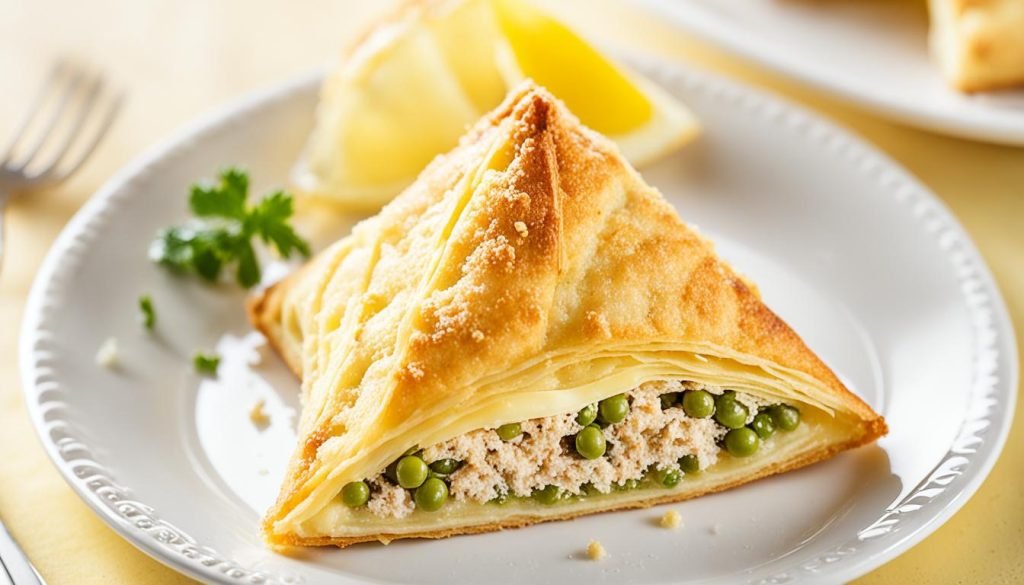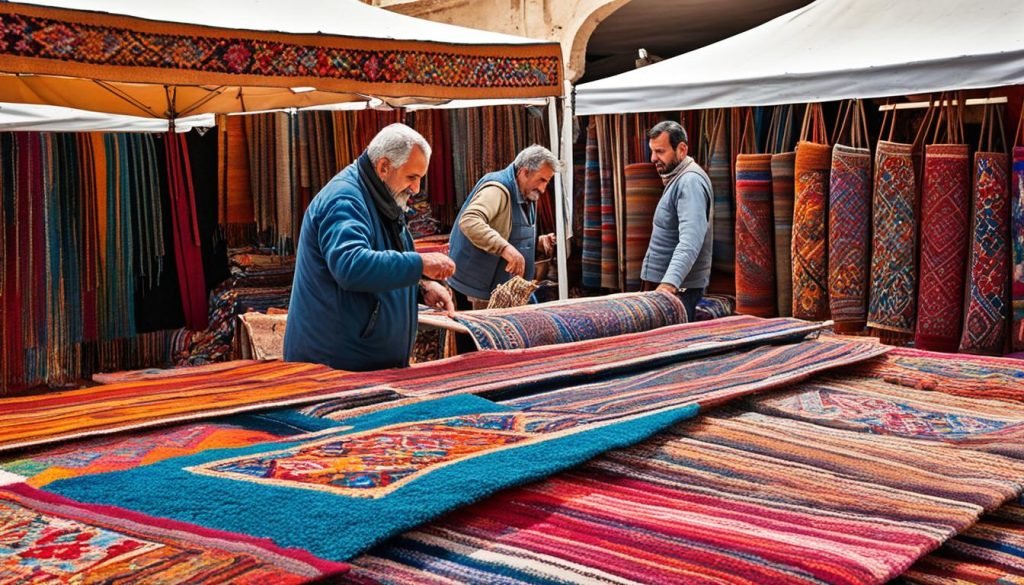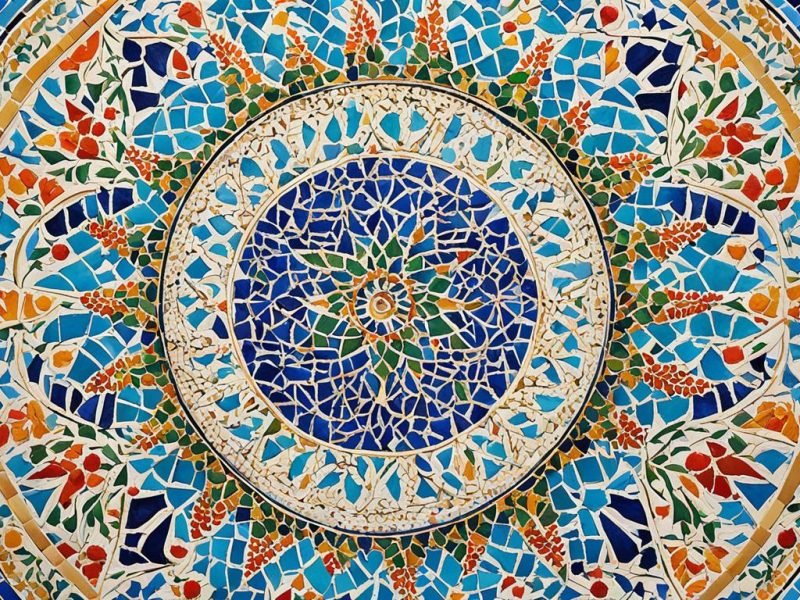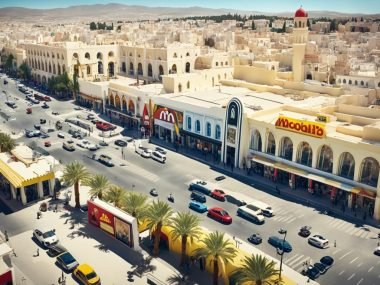Tunisia is one of the oldest societies in North Africa with over 3,000 years of history. It is the most northern country in Africa. It has a rich mix of culture and history that attracts many travellers.
From the ancient Carthage ruins to the lively capital, Tunis, Tunisia’s history is vast and varied.
The Tunisian Revolution, part of the Arab Spring, added to its historical significance. Tunisia also has beautiful Mediterranean beaches. These are less crowded than other places.
Plus, Tunisia is famous for its lovely olive oil. This is a big part of Tunisia’s natural wealth and food tradition.
Key Takeaways
- Tunisia holds over 3,000 years of history and ancient civilisations.
- The country is famed for the ancient ruins of Carthage and the modern capital city, Tunis.
- The Tunisian Revolution significantly contributed to the Arab Spring.
- Unspoilt Mediterranean beaches make Tunisia an attractive tourist destination.
- Renowned for its olive oil production, enhancing its culinary acclaim.
The Ancient Ruins of Carthage
The ruins of Carthage show Tunisia’s strong past in the Mediterranean world. Founded in the 9th century BC, Carthage was very important. It was a key power and is now a famous UNESCO site in Tunisia.
Historical Significance
Carthage is important in North African history. It was started by Phoenician settlers. It became a top city in the Mediterranean.
The city was very powerful under the Carthaginians. It was a main spot for trade and culture.
The Baths of Antoninus
The Baths of Antoninus in Carthage are amazing. They are one of the biggest Roman baths outside Rome. They show brilliant Roman architecture.
The place is well kept. It lets us see how people lived in the Roman times.
Cultural Impact
Carthage’s culture affects many areas. It’s like an outdoor museum. Visitors learn about the old Mediterranean world.
It tells stories of North African history and Carthaginians. You can see this in its ruins and artefacts.
| Aspect | Description |
|---|---|
| Foundation | Established in the 9th century BC by Phoenician settlers. |
| Key Structure | Baths of Antoninus, a remarkable example of Roman architecture. |
| Cultural Influence | Shaped the Mediterranean world and North African history. |
The UNESCO-listed El Djem Amphitheatre
In Tunisia, the El Djem Amphitheatre is a stunning sign of old Roman greatness. It is a UNESCO World Heritage Site. It shows off the area’s amazing buildings and history.
Engineering Marvel
The El Djem Amphitheatre is known for its smart building ways. These were even compared to the famous Roman Colosseum. It could hold up to 35,000 people. This shows the genius of ancient Roman builders. They made a place with lots of seats and secret walkways. It is one of Tunisia’s great architectural spots.
Tourist Experience
Visiting the El Djem Amphitheatre is an exciting journey. It takes you back to its splendid past. As you walk under the big arches, you can imagine the loud cheers from long ago. El Djem is not too crowded. This makes it special for exploring its deep past. Standing in the middle of the arena or walking the old paths feels like a step back in time. It’s a deep dive into Tunisia’s rich Roman history.
Traditional Tunisian Cuisine
Tunisia is home to many delicious foods. It has a long history and a lively culture. The food includes tasty pastries and spicy sauces. They really show what North African cuisine is all about.
Brik
Brik is a famous Tunisian pastry. It is thin, crispy, and very tasty. Often eaten at the start of a meal. It has an egg, tuna, capers, and sometimes parsley inside. The Brik is crunchy on the outside but full of flavour inside. It shows the skill of Tunisian cooking. It mixes different tastes and textures in an amazing way.

Harissa Paste
Harissa chilli paste is key in Tunisian food. It’s spicy and used in lots of recipes. Made with chillies, spices, and olive oil, it’s very flexible. You can find it in stews and sandwiches. Harissa’s red colour and bold taste stand out in any dish.
Tunisian Couscous
Tunisian Couscous is very important too. People enjoy it at big family meals and parties. It often comes with Harissa paste for heat. The couscous goes well with lamb, chicken, and lots of vegetables. It’s a full meal that shows the variety of flavours in North African food.
| Dish | Key Ingredients | Unique Feature |
|---|---|---|
| Brik Pastry | Egg, Tuna, Capers, Parsley | Crispy exterior with a tender filling |
| Harissa Paste | Chillies, Spices, Olive Oil | Fiery flavour adding depth to dishes |
| Tunisian Couscous | Couscous, Lamb or Chicken, Vegetables, Harissa Paste | Rich and spicy North African staple |
The Vibrant Medina of Tunis
The Medina of Tunis sits in the Tunisian capital. It’s full of history and daily life. It blends old traditions with the now of Tunisian life in a bustling marketplace.
I love walking through its narrow paths. They are filled with shops. You find colourful fabrics and tasty spices here. Every shop in the Medina tells an old story through their goods. Craftsmen show their skills with pride.
Tasting local food here is a must. Street vendors offer yummy treats. Their foods fill the air with delicious smells. Every bite introduces you to Tunisian life.
The Medina is alive with stories and discoveries. There’s always a new place to see or a new food to try. Meeting a craftsman or finding a secret spot is all part of its magic.
| Aspect | Highlight |
|---|---|
| Crafts | Handmade Textiles & Spices |
| Food | Authentic Street Foods |
| Cultural Significance | Historical Trading Hub |
What Is Tunisia Famous For?
Tunisia is known for its lovely Mediterranean beaches. These beaches draw in tourists worldwide. They make Tunisia’s beach resorts very special.
Mediterranean Beaches
Tunisia’s Mediterranean coast has clear waters and golden sand. It’s perfect for relaxing holidays. With a warm climate and beautiful views, these beaches are loved all year round.
From Tunis to Sousse, the coast is popular. You can try many water sports here too.
Djerba Island
Djerba Island mixes modern comforts with real culture. It has lovely beaches and peaceful lagoons. Visitors enjoy both relaxing and exploring here.
Local markets and historic sites show Tunisian life and history. It’s truly unique.
Hammamet
Want fun on your beach holiday? Go to Hammamet. It’s famous for nightlife and beach clubs. There’s fine food and lots of water sports too.
Hammamet’s lively scene shows Tunisia’s fun side. There’s always something fun to do.
Sidi Bou Said
Sidi Bou Said sits high, overlooking the blue Mediterranean Sea. This Tunisian village is famous for its blue-and-white buildings. As you wander the cobblestone streets, the beauty and culture grab your attention.
Art and Culture
Artists love Sidi Bou Said for its inspiration. The blue-and-white buildings make a lovely scene for art. You’ll find galleries and studios full of art that shows Tunisian life.
Shopping Experience
Shopping here is a journey into Tunisian culture. You can find beautiful ceramics and jewellery in the markets. Each piece you find tells a Tunisian story, great for souvenirs.
Scenic Views
Sidi Bou Said offers amazing sea views. From its high spots, you can see the beautiful coast. Walking here, you can take in peaceful views and enjoy the beauty.
| Aspect | Details |
|---|---|
| Art and Culture | Galleries, studios, blue-and-white architecture, local artists. |
| Shopping Experience | Tunisian handicrafts, ceramics, jewellery, markets. |
| Scenic Views | Mediterranean Sea views, cobblestone streets, elevated panoramas. |
The Great Mosque of Kairouan
The Great Mosque of Kairouan was set up in 670 AD. It’s a key piece of Islamic art and is highly valued as a major religious site in Africa. This mosque has helped lots in their Islamic learning and faith.
The mosque has a big courtyard that shows off the beauty of old mosques. It offers a calm place for thought and group prayers. Its tall minaret is a stunning example of Arabic style. It stands out in the city and guides both in vision and spirit.
The inside prayer hall is a work of art. It shows off fine details that display the beauty of Islamic art.
A special thing about the Great Mosque of Kairouan is its two roles. It is both a worship place and a learning centre. Many scholars have been here over the years. It’s key for education and growing spiritually. Every visitor can sense Tunisia’s religious, cultural, and art history here. It’s a key religious site.
Exploring the Sahara Desert
The Sahara Desert in Tunisia shows off golden sand dunes and big skies. It looks very different from the coastal areas. This amazing place shows the varied nature in Tunisia. It’s perfect for adventure lovers.
Quad Biking
Quad biking in the Sahara is thrilling. The ride over huge sand dunes is exciting. People from everywhere come to try it. Racing over the sand, seeing wide views. It’s an adventure you won’t forget.
Camping Adventures
Camping under the stars in the Sahara is calming. It lets you feel close to nature. The quiet dunes and clear night skies are special. It’s an adventure you will always remember.
| Activity | Experience | Highlights |
|---|---|---|
| Quad Biking | High Adrenaline | Racing over sand dunes, panoramic views |
| Camping Adventures | Serene and Peace); | Starlit skies, tranquil environment |
Tunisian Carpets and Artisanal Crafts
Tunisian culture shines through its carpets and crafts. Artisans put their hearts into each piece. They show Tunisia’s traditional weaving skills.

Berber Carpets
Berber carpets share Berber heritage. Every carpet is hand-woven. Patterns and symbols tell stories and traditions of generations.
They’re more than art. They capture the tribe’s history and culture.
Kairouan Carpets
Kairouan is famous for its beautiful carpets. They have detailed designs and bright colours. These carpets show Kairouan’s excellent craftsmanship.
Their beauty and craftsmanship make them popular worldwide. Artisans’ hard work shines in each piece.
| Type of Carpet | Key Characteristics | Cultural Significance |
|---|---|---|
| Berber Carpets | Hand-woven, symbolic patterns, natural dyes | Reflect Berber heritage, story-telling through patterns |
| Kairouan Carpets | Intricate designs, vibrant colours, skillful craftsmanship | Representative of Kairouan’s artistic legacy |
Tunisian weaving offers the world these unique pieces. Collectors and fans everywhere love them. They are treasures that last forever.
Modern and Historical Arabic Architecture
Tunisia’s buildings have a great mix of Arabic looks and different types. They are part of the country’s rich past. These designs mix new ideas with old ways. They make Tunisia’s past stand out in its buildings.
Religious Structures
Tunisia’s religious buildings show its Islamic past. Places like the Great Mosque of Kairouan demonstrate detailed Arabic designs. They offer peace and show how Tunisia’s building styles have changed over time.
The designs mix the old with the new. This blend shows Tunisia’s varied history through buildings.
Details in these buildings are very special. From high towers to beautiful patterns, they show a strong tradition. They mix past and present, showing the country’s diverse story.
Colonial Influences
The colonial time added more styles to Tunisia’s buildings. French and Italian styles brought new ideas. This period added more to Tunisia’s city scenes. A street called Boulevard Habib Bourguiba has old-time buildings. They mix well with Arabic looks.
Looking at Tunisia’s cities, the mix of old colonial history and local past is clear. This creates a special look in buildings.
| Architectural Style | Notable Examples |
|---|---|
| Islamic | Great Mosque of Kairouan, Zitouna Mosque |
| Colonial | Boulevard Habib Bourguiba, Municipal Theatre of Tunis |
Conclusion
Tunisia’s heritage is amazing and draws many people to visit. It has ancient places like Carthage and the big El Djem Amphitheatre. Each corner of Tunisia has stories of its long history.
Places like the Great Mosque of Kairouan show its spiritual side. The Medina of Tunis is full of life and culture.
Tunisian food is delicious and full of different flavors. Dishes like Harissa and Brik are a must-try. Tunisia has lovely beaches and places like Djerba Island and Hammamet too.
The desert offers exciting things like quad biking and camping. It’s a stark contrast to the sea.
Tunisian carpets show the nation’s skill in making beautiful things. Old and new Arabic buildings highlight Tunisia’s mixed influences. Together, these make Tunisia a very special place to visit.







